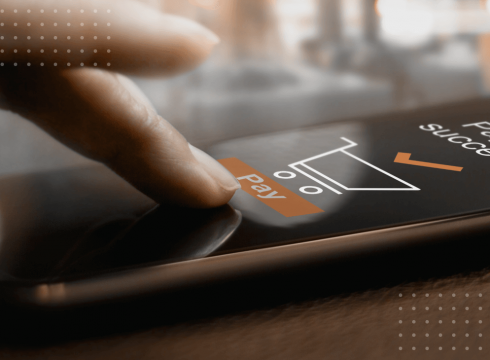Today and the Future of Mobile Payments

The long-awaited future is here. Every aspect of our daily lives is going through drastic shifts thanks to the digital revolution of the modern era. The finance industry is one of the fields affected most by digitalisation, and inevitably, the way people use their wallets and cards are undergoing significant changes. Mobile digital wallets are getting increasingly popular to the point where the upcoming generations pick their mobile phones over carrying a wallet. Nevertheless, the emergence of new technologies creates their own weak links. As new digital wallet options pop up every day, choosing the best digital wallet solution for you and your organisation becomes increasingly difficult. In this article, we gathered the essential criteria a perfect digital wallet solution need to meet;
Contactless in-store mobile payments
Contactless payment is not a recent addition to our lives, but it’s a welcome one for sure. Since prioritising customer satisfaction is the way to go when inheriting new payment methods and digital wallet solutions, having the ability to make contactless payments via mobile devices provides the most convenient option for customers thanks to their rapid nature. The payment process will be as simple as hovering over the payment terminal with an NFC supported device with the right digital wallet solution. Another rising trend that’s already so popular in the Far East, QR payments, has also begun dominating the western world thanks to new FinTechs emerging.
More secure transactions
Nowadays, nearly every mobile device has some kind of biometric authentication system such as fingerprint scan or face recognition. These features are generally used just for unlocking the device’s screen, but this will change with the increasing popularity of mobile payment options and digital wallets. Apple’s TouchID has already found its place on MacBooks, leaping forward the secure and extra-fast payment method’s usage. Secure payment and authentication systems are already mainstream, but the inclusion of biometric authentication systems in contactless, digital, or peer-to-peer payment processes makes mobile financial services a much more secure and fraud-proof way to conduct transactions.
A self-sufficient ecosystem
In today’s world, it’s hard to run into someone without an account at a conventional bank. With the upcoming rise of the neobanks and digital wallet technologies, this is also about to change for good. People without a traditional bank account will become a common sight, so your digital wallet service needs to be inclusive enough to cover all needs of all people. Mobile top-up ability or the option to make transactions with e-money assets would not only improve your customers’ experience but would also create a self-sufficient system that doesn’t require any external support.
P2P Money Transfers
All useful mobile wallet apps should allow for the seamless transferral of money between two individuals without delay or cost. After all, what good is transferring money to someone if they can’t access it for days on end? Choose a service that operates in real-time around the world. Also, proximity-based payment systems can be helpful in P2P money transfers. Is there a more straightforward way to transfer money than tapping one device to another? Probably not.
Account Management
Customer service and dedicated account management can help you to look after your money. Just as a standard bank has a representative who can answer your needs, your digital wallet should also be able to provide expertise for you in any instance. Since customer-centricity is one of the main driving forces behind the advances in mobile payment systems, offering guidance for customers in need is the best way to satisfy their needs.
Comprehensive Payment Abilities
In the digital world, your mobile app should be able to make digital payments in various ways. Giving your customers the ability to pay their bills and make their utility payments with the move of their fingers is a perfect example of how advancing mobile payment technologies can improve the ease of users’ lives. It’s not going to happen in an unforeseeable future, too. China has already started to enable mobile utility payments through the WeChat application.
Host Card Emulation
HCE is when a device (such as a smartphone) is permitted to emulate a debit or credit card on an NFC device (contactless payment) without relying on access to the secure elements of the card. It’s useful for making card payments without physically having the card on your person. When you can link your physical cards with your digital wallet through your mobile device, the possibilities are endless. Customers can use their devices as their existing credit or debit cards, or they can link city transportation cards to their devices to get one step closer to stopping using a wallet as a whole.
The Future of Debit And Credit Cards
There’s no doubt that the world is moving forward to a cashless future, and when you think about it, credit cards and debit cards were the foundation of this transformation. Yes, mobile and contactless payments are faster, easier, and look more futuristic. However, we shouldn’t forget that there are some regions like Germany that still prefer cash over cards—transition is not always so quick. Thus, it is safe to say that the future of mobile payments will not be fully mobile-centric; it’s going to be a more unified experience with mobile devices, credit cards, debit cards, and even cash, flowing in a seamless system.
The Future is Here with Tmob
As a SaaS and PaaS service provider that focuses on next-level banking solutions and mobile financial services, we are always looking after mobile financial services trends to build upon our MFS Platform that’s ready to be customisable for the needs of any kind of financial operation. With Tmob MFS platform, FinTech start-ups, e-commerce operations, and even municipality services can meet the future of mobile payment technologies within months. See our mobile payment case studies here.
Who are We?
Tmob | Thinks Mobility is a global technology powerhouse, specialized in digitalization and integration solutions, bringing growth and success to businesses and partners with its innovative SaaS, PaaS, and premium solutions since 2009 with Tmob Turkiye (TR) and Tmob United Kingdom (UK) headquarters.
Sources: 1- https://liveperson.docsend.com/view/tm8j45m 2- https://www.scmp.com/business/china-business/article/1579060/tencent-enables-users-pay-utility-bills-through-wechat




